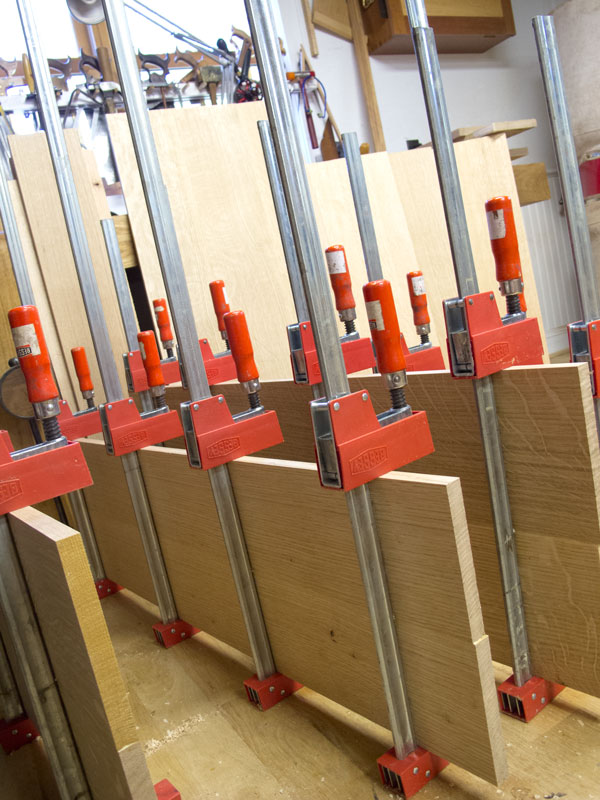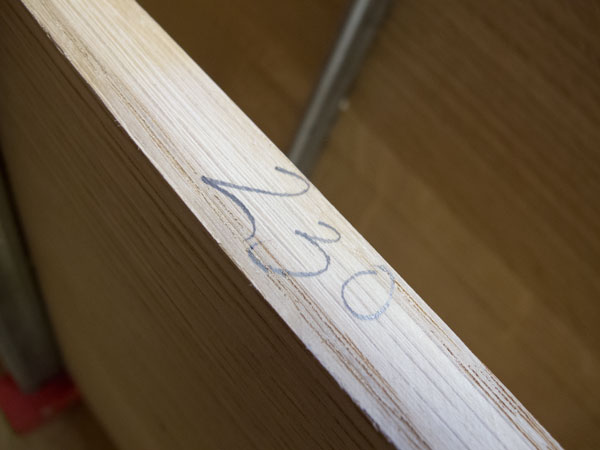We may receive a commission when you use our affiliate links. However, this does not impact our recommendations.
One of the best pieces of woodworking advice is, “Go slow, it’s faster.” But that doesn’t apply to gluing up narrow boards into panels.
When I have to glue up panels, I start in the morning by jointing and planing the stock to its finished thickness (assuming I’m using machinery), and then I immediately joint the boards’ edges and glue up the panels that same day.
By compressing all that activity into a short period of time, there’s little time for the wood to distort. A board that moves even a few thousandths of an inch can be difficult to tame with clamps. And mismatched seams in your panels can add hours of work and frustration to the construction process.
I have enough clamps in my shop to deal with about five average panels at a time. So by the time I glue up five panels, I’m ready to remove the clamps from the first panel. That’s why I always scrawl the time I clamped up the panel on its edge.
Not everyone can devote six hours to this process. If you can work in short bursts only, consider tackling a project a few panels at a time – say, the sides and bottom in one session. The shelves in a second session. The door stock in a third.
That’s how I work when I dress stock by hand. I plane up the faces and edges of the boards in a panel. Then I joint the edges and glue them up immediately. I set that panel aside and begin planing up the stock for the second panel.
Either way, I end up with panels that need almost no additional flattening and seams that are perfectly aligned.
— Christopher Schwarz
Here are some supplies and tools we find essential in our everyday work around the shop. We may receive a commission from sales referred by our links; however, we have carefully selected these products for their usefulness and quality.











I spent four hours yesterday gluing up panels and hand planing and got up at 4:30 this morning to finish the planing. I was sweating like a fool this morning but damn I enjoyed it. I filled up a 40 gallon garbage can with shavings but those panels are flat!
It appears from the photo that you put your clamps on only one side of the board. However, I have always read that in gluing up panels, the best practice is to alternate the clamps on the front and back sides. Is this advice wrong or unnecessary, or are you not following best practice?
Chris,
Thanks for the timely advice: I’m about to begin a project in which I’ll use your process.
Meahwhile, in photo #1, I noticed all the clamps are on the same side of the workpieces. Did the old rule of alternating clamps become outdated with the advent of parallel-jaw clamps? Thanks for your time.
Don Knott
I learned to do the same mill and glue process from (bad) experience. Though, I still have a dickens of a time getting the boards in perfect alignment. I’ve read tons about it; I’m sure it will click some day.